dialogue
studentwise: How does an owl hear?
Ben Drucker ’22, in the department of mathematics & statistics, researched the neural dynamics of high-frequency coincidence detection in the bird sound localization circuit with Assistant Professor of Mathematics & Statistics Joshua Goldwyn, through a grant Goldwyn received from the National Science Foundation.
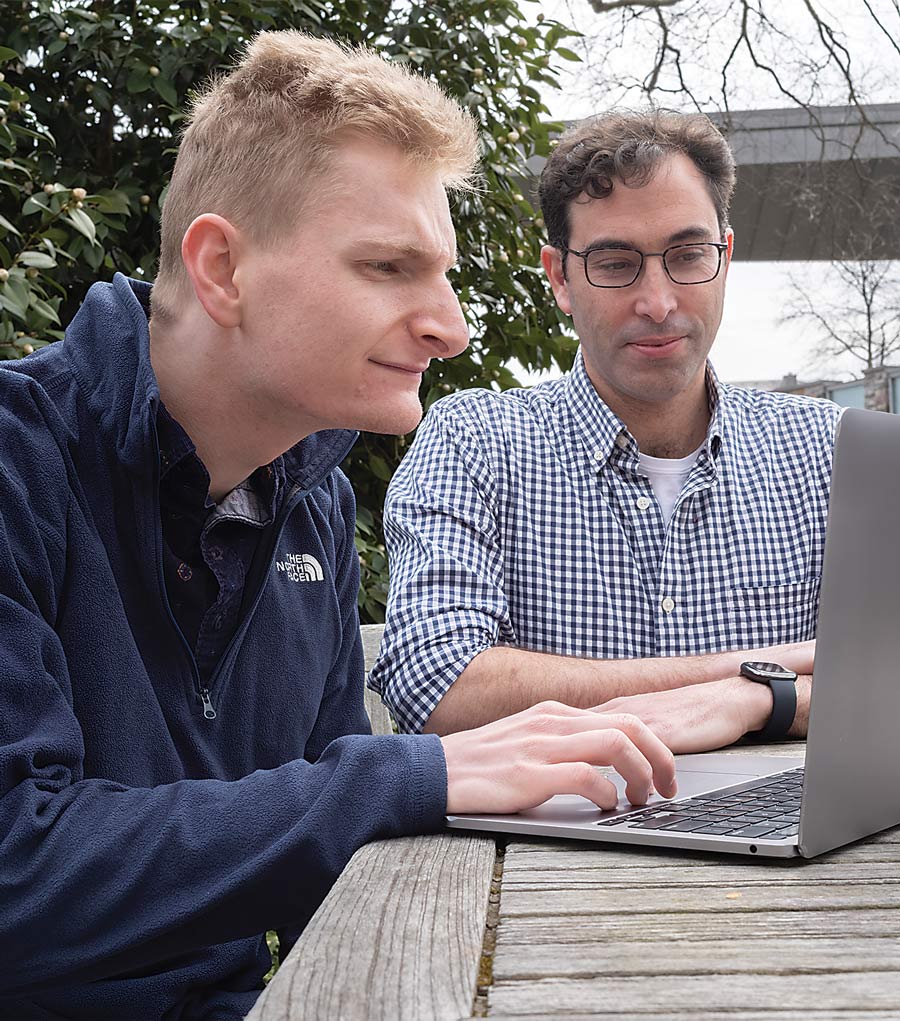
laurence kesterson
“I was very excited to embark on the coding portion of our research,” says Ben Drucker ’22, (left) who worked with Joshua Goldwyn, assistant professor of mathematics & statistics, to develop and study a mathematical model that describes the activity of highly specialized neurons in the auditory system of barn owls.
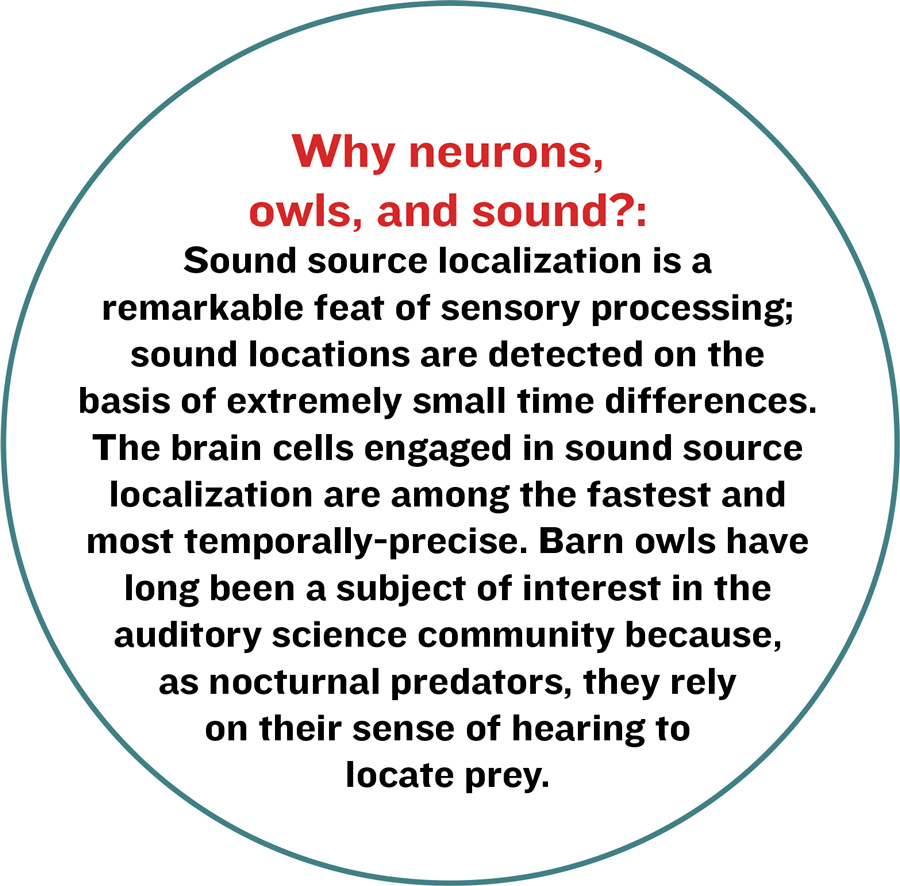
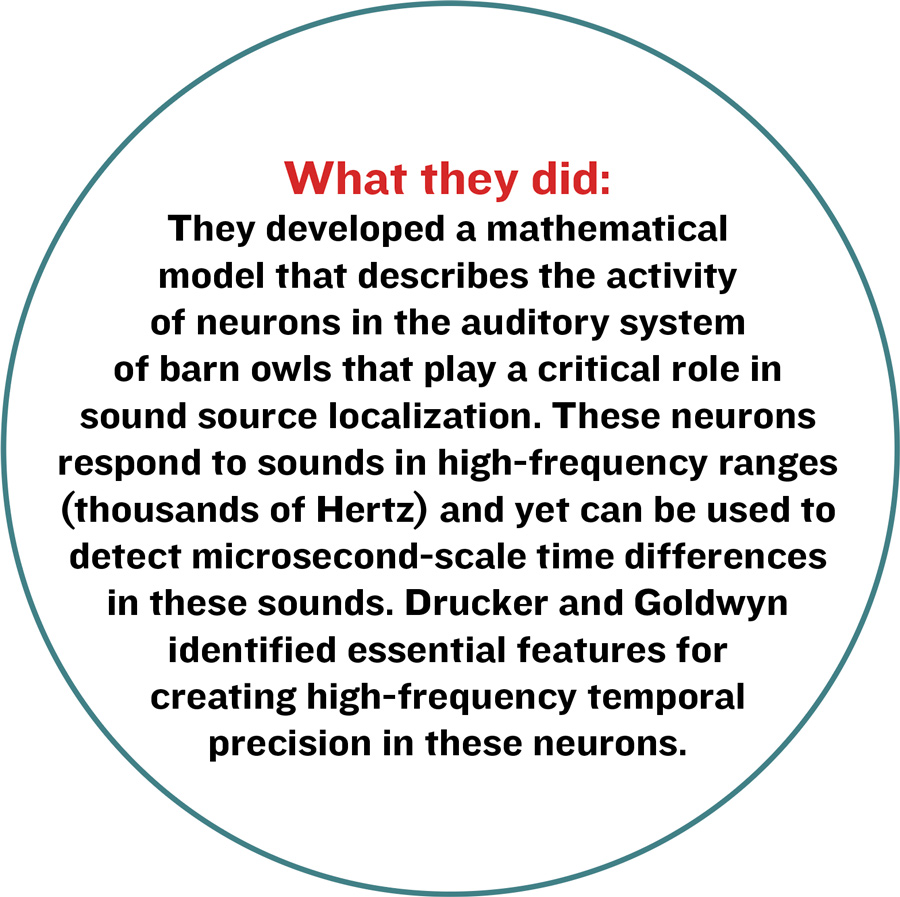
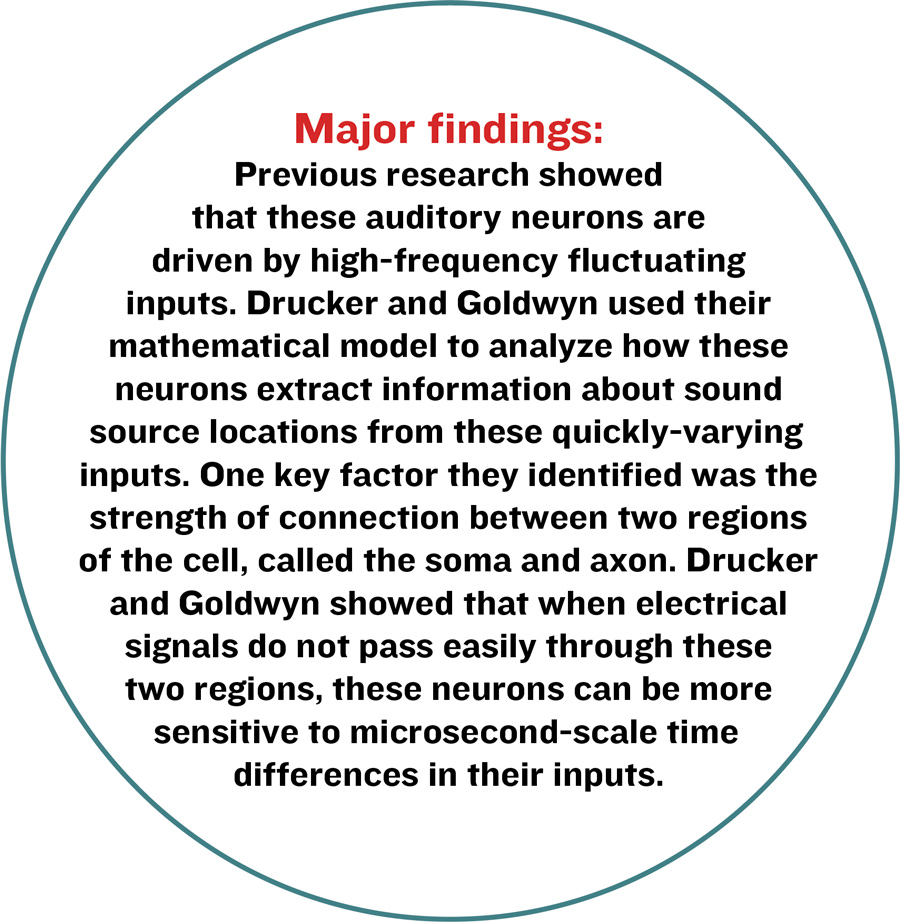
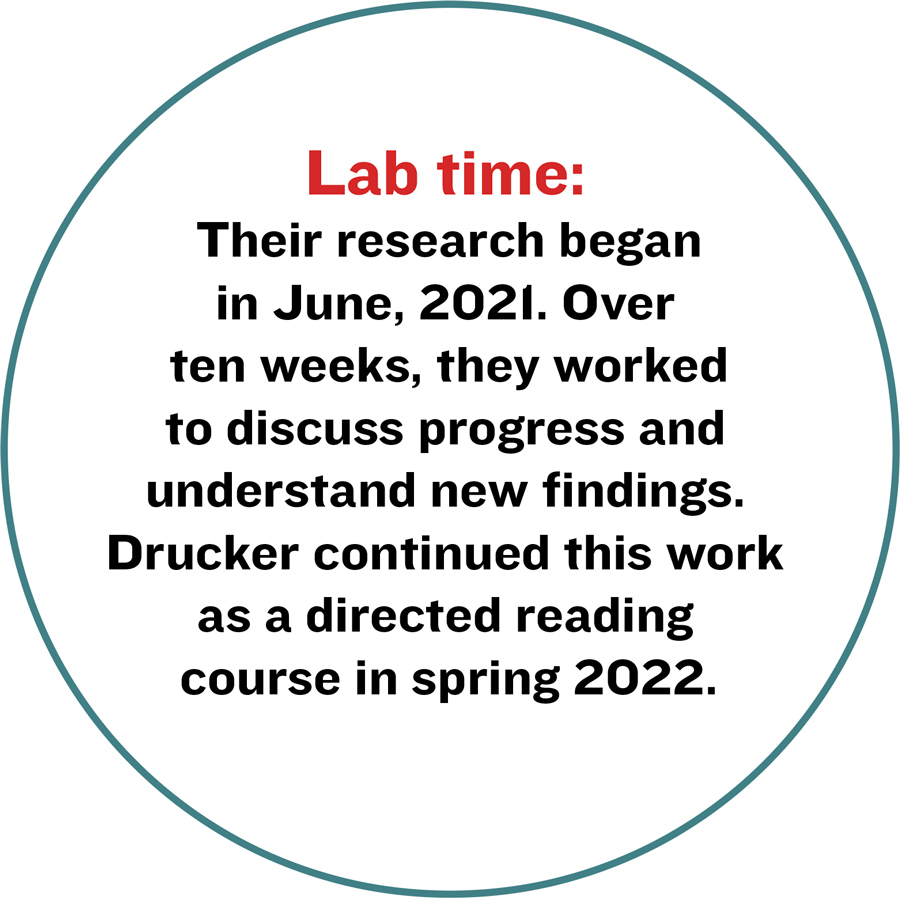
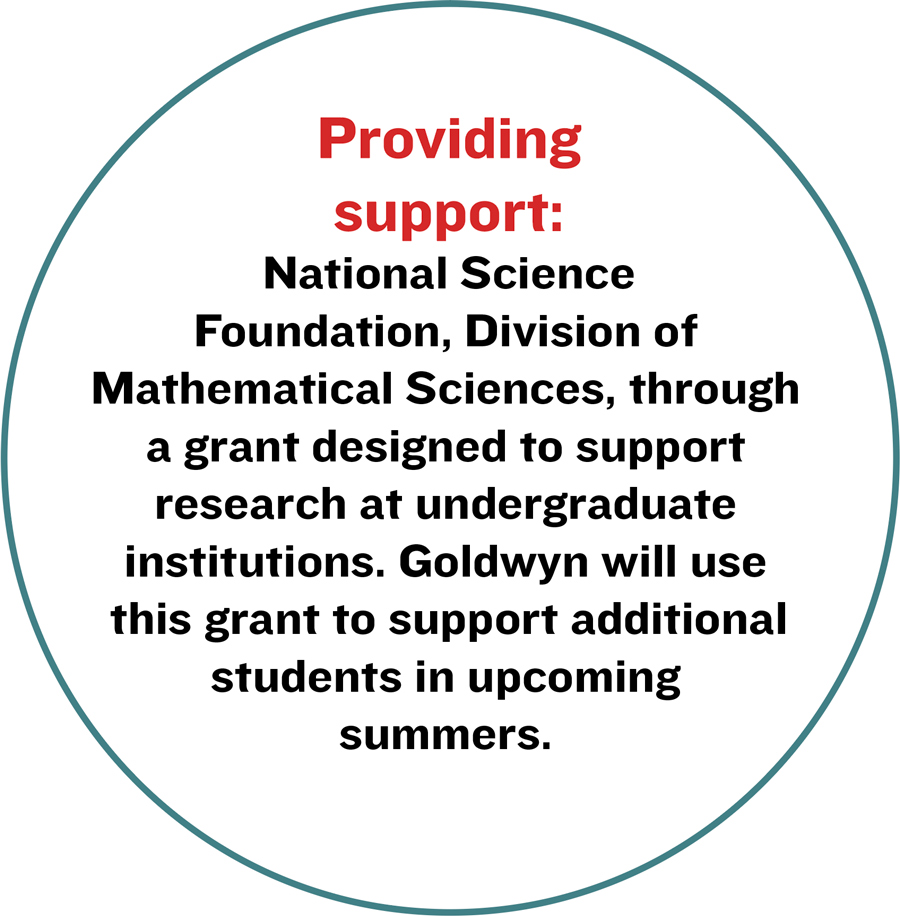
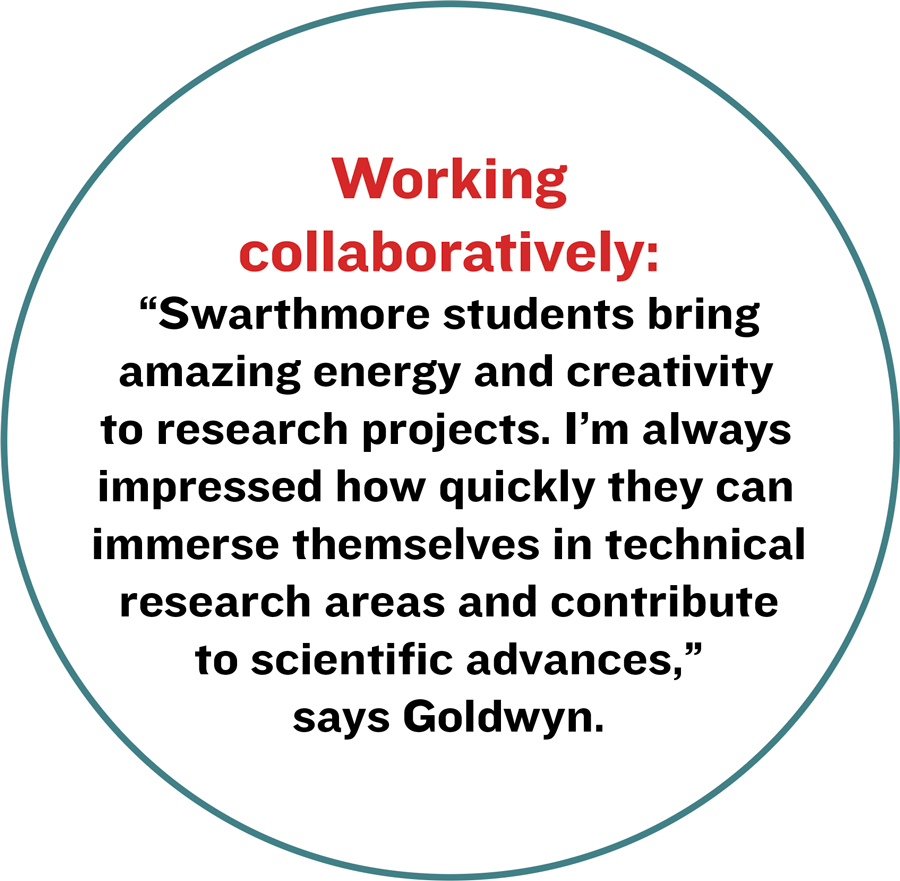
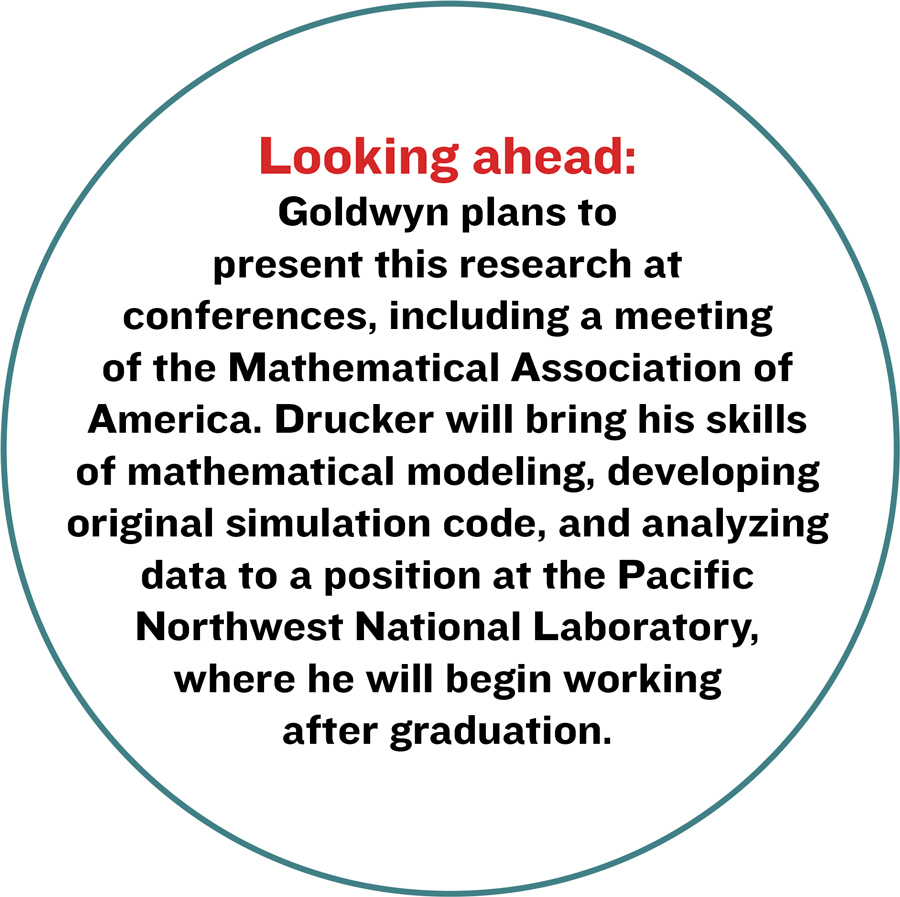
studentwise: How does an owl hear?

laurence kesterson
“I was very excited to embark on the coding portion of our research,” says Ben Drucker ’22, (left) who worked with Joshua Goldwyn, assistant professor of mathematics & statistics, to develop and study a mathematical model that describes the activity of highly specialized neurons in the auditory system of barn owls.
Ben Drucker ’22, in the department of mathematics & statistics, researched the neural dynamics of high-frequency coincidence detection in the bird sound localization circuit with Assistant Professor of Mathematics & Statistics Joshua Goldwyn, through a grant Goldwyn received from the National Science Foundation.






